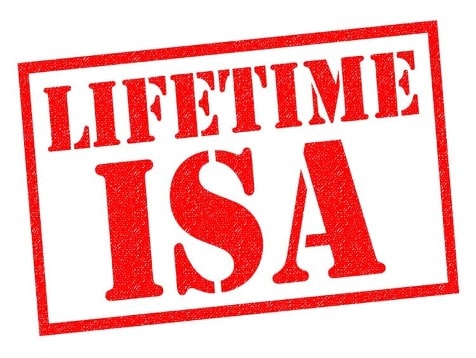SIPPs and ISAs are horrendously complicated. Why not simplify the investing tax shelters?
After the 2008 global financial crisis, the UK base rate fell to 0.1% and stayed there until December 2021. Simultaneously, the Bank of England printed £895 billion of bonds — aka quantitative easing — devaluing the currency at a precipitous pace.
After a pandemic of more money printing and, quite frankly, sloppy fiscal discipline, asset prices soared, and inflation rose above double digits. The Bank is now hurriedly engaging in quantitative tightening by buying back bonds and is also increasing the base rate which now stands at 4.5%.
I’d argue given the latest 8.7% CPI print that the base rate will end up closer to 7-8%, far above what most analysts are expecting. But to still your laughter, be aware that I have been predicting higher rates than most for some time — for context, this time last year few analysts thought that the Bank would even reach 3%.
But for once, I’m not on a Bank of England blame game rampage. Instead, I want to consider the UK’s two most popular tax shelters — as tightened monetary environment calls for a revamp of the current SIPP and ISA. I won’t get into EIS (my favourite scheme, but this is predominantly for non-listed companies).
ISAs explained
Let’s start by breaking down the current structure.
An ISA (Individual Savings Account) allows you to save a total of up to £20,000 per tax year from your net income across four different types of account. All savings and investing returns are free from tax (apart from stamp duty), and you can withdraw whenever you wish, though this can affect your annual entitlement with certain providers who do not offer Flexible ISAs.
This is extremely generous by international standards. In most other countries, you can pick tax-efficiency and flexibility, and there is nothing quite like an ISA anywhere else.

I’ll start with the Lifetime ISA (LISA). Investors age over 18 and under 40 can save up to £4kpa (leaving £16kpa for other ISAs), which the government will then top up by 25% to a maximum of £1,000 per year until you turn 50.
While you can invest as usual, the money must be used either to buy your first home or can be withdrawn when you hit 60. Early withdrawals are penalised at 25%, which is more than the 25% top-up. To understand this, if you deposited the full £4k allowance and received the £1k bonus, you would have £5k. If you then withdrew the £5k, the government would charge you £1,250, leaving you £250 worse off for trying to save.
Further, your property must be bought with a mortgage, at least 12 months after your first LISA deposit, and cost less than £450,000. This account clearly won’t suit everybody, but first time buyers simply cannot achieve a better rate than a guaranteed 25% in addition to investing returns.
Then there’s cash ISAs, which are every low risk but don’t come close to keeping up with inflation, never mind standard savings accounts. For perspective, basic ratepayers can earn £1,000 and higher ratepayers £500 tax free in interest every year anyway.
Third, we have the classic Stocks and Shares ISA, where you can invest in shares, ETFs, bonds, and investment funds which all typically outperform cash over the longer term.
Finally, there’s the Innovative Finance ISA (IFSA), which is probably beyond most retail investors. Essentially, you can profit from participating in peer-to-peer loans or buying up business debt — where you invest in borrowers who struggle to get credit with a bank in exchange for higher returns. You might be able to see where this can go wrong — especially as there is usually no FSCS protection.
ISA savings — excluding IFSAs — are typically covered by the £85,000 FSCS scheme, with wealthier investors holding accounts with different banking licences.
Investors typically fill up their LISA with £4,000 first if they qualify, and then invest the remaining £16,000 using a Stocks and Shares ISA thereafter. The exception is people coming close to buying a house or other large expense, in which case a cash ISA or general savings account is safer than a Stocks and Shares ISA.
None of this is advice of course, but it doesn’t take a financial genius to choose the right account. However, as a caveat, ISAs are ‘use it or lose it,’ and reset in each new tax year — with the new tax year often dubbed as ‘ISA season.’
SIPPs explained
After Chancellor Hunt’s recent changes, SIPPs — or self-invested personal pensions — operate thusly:

You can claim basic rate tax relief, where the government returns the 20% income tax you pay on money you contribute to your SIPP. This is usually automatically paid in after a few weeks (aka relief at source). Every £80 a basic ratepayer contributes gets a £20 top-up.
Higher and additional ratepayers get either their 40% or 45% tax back as SIPP contributions — such that you can pay as a little as £55 to receive £45 in tax relief for a £100 total contribution.
As you also don’t make student loan repayments on SIPP contributions, it’s even more absurdly tax efficient. In certain tax bands, such as the £50k-60k high income child benefit trap, or the £100k-125k 60% +childcare tax trap, you may even face effective marginal rates of 70%-114%, such that saving into your SIPP becomes almost ludicrously tax efficient.
Most people can pay 100% of their gross annual income into their SIPP up to a maximum annual allowance of £60,000, though of course the actual amount contributed by you is far lower dependent on your tax status. There used to be a lifetime allowance of just over £1 million; this has been scrapped and there is now no limit to SIPP saving other than the annual limit.
This allowance is tapered for very high earners and much lower for non-earners (including your children). If you start withdrawing from your pension and then start to contribute again, you can only contribute £10,000 gross per year.
You can withdraw 25% of the pot tax-free at age 55 (rising to 57 soon), subject to a maximum of £268,275 unless you have protection in place. Withdrawals beyond this are taxed at your marginal rate, though this is generally fairly low for all but the most fortunate retirees.
You benefit from higher compound returns than in an ISA as your returns are based on gross income contributions, but you have far lower flexibility and far less certainty in what your tax might be in the future. And with some qualifications, you can carry forward any unused annual allowance for the past three tax years.
The current situation
The tax system is becoming increasingly punitive while the tax shelters are becoming increasingly generous. For context, the annual ISA allowance was £11,280 a decade ago, while the SIPP annual allowance was £40,000 and the lifetime allowance also frozen at just over £1 million for years.
Simultaneously, corporation tax is up to 25%. Dividend tax and capital gains tax are up while both allowances are down. Income tax bands are frozen until 2028. The UK’s tax burden is at its highest since World War II while the shelters are at their most lavish ever. This creates a perverse incentive to invest and save as the tax on income taken outside shelters is so incredibly high.
Further, the amount you can invest into shelters is far in excess of most retail investor capacity. Consider this: say you earn £150,000 per annum as an employee. You contribute £60,000 to your SIPP from your gross income, and then face circa 40% tax on the £90,000 remaining. After being left with £54,000, you contribute £20,000 to your ISA and then live off £34,000.
Most likely someone earning £150,000 would rather live a slightly more luxurious life, but the basic point is that these shelters are effectively generous enough for 95%+ of earners to avoid all dividend tax or capital gains on their investments.
Of course, the combination of multiple ISA account types and providers, alongside complex SIPP calculations, is enough to put off many would-be retail investors. And as the government reserves the right to amend these accounts at any time, retirement planning and general investing choices is complex; for example, Labour has already promised to return SIPPs back to their previous conditions should they win power.
This lack of certainty is sub-optimal.
Reform
Both the red and the blue party need to sit down and hammer out a new tax shelter deal. Starting with Nigel Lawson, continuing with Gordon Brown, and right into present day, constant tinkering with the tax and shelter system has made investing with certainty virtually impossible.
The UK needs one account which we have certainty will never change, with annual deposit limits set to rise with inflation. One tax shelter that can be used by the vast majority of retail investors to satisfy all of their investment needs.
This account could be offered by multiple providers, but the key thing is that the shelter itself would have universal benefits that apply to everybody equally. The current system whereby higher ratepayers simply contribute more and more to their SIPP to avoid paying ever higher tax rates is not sustainable, and also contributes to sluggish economic growth.
I know this is controversial, but the first thing I would do is scrap the notion of investing gross pre-tax income. In Australia, all pension contributions are first taxed, but then withdrawals aren’t — while there is no ISA, their SIPP equivalent operates on ISA-style rules, but with the pension-style time-related withdrawal restrictions.
I’d argue that any proposed universal account should also only see contributions from net post-tax income.
Of course, the key benefit of the ISA is that there are no restrictions on withdrawals, and you don’t have to wait for withdrawals. This new account I have in mind would set the notice period for withdrawals at one year — if you change your mind, you can cancel the withdrawal. This will stop the short-term investing mindset that has pervaded the retail consciousness ever since the pandemic-induced meme stock hysteria.
This account would be free from capital gains or dividend taxes forever, with an annual contribution limit of £50,000pa. However, investors should be limited in that they should only be able to invest in London-listed shares. Tax relief on gains should be contingent on investing in the country’s companies — if you want to invest abroad, you pay capital gains at the going rate.
Get rid of the Lifetime ISA which simply pumps up the housing market but only helps savers who were going to be able to afford a home eventually anyway. A couple saving £8,000 per annum from their net income needs just three years to save a 10% deposit for an average UK home anyway.
Scrap the innovative ISA and cash ISA — instead cash held in this new product will pay an interest rate set by the provider. And scrap SIPPs entirely.
One tax shelter account type. That’s all the UK needs.
This article has been prepared for information purposes only by Charles Archer. It does not constitute advice, and no party accepts any liability for either accuracy or for investing decisions made using the information provided.
Further, it is not intended for distribution to, or use by, any person in any country or jurisdiction where such distribution or use would be contrary to local law or regulation.